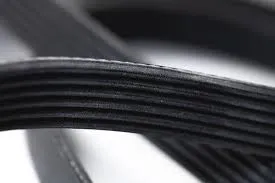- Arabic
- French
- Russian
- Spanish
- Portuguese
- Turkish
- Armenian
- English
- Albanian
- Amharic
- Azerbaijani
- Basque
- Belarusian
- Bengali
- Bosnian
- Bulgarian
- Catalan
- Cebuano
- Corsican
- Croatian
- Czech
- Danish
- Dutch
- Afrikaans
- Esperanto
- Estonian
- Finnish
- Frisian
- Galician
- Georgian
- German
- Greek
- Gujarati
- Haitian Creole
- hausa
- hawaiian
- Hebrew
- Hindi
- Miao
- Hungarian
- Icelandic
- igbo
- Indonesian
- irish
- Italian
- Japanese
- Javanese
- Kannada
- kazakh
- Khmer
- Rwandese
- Korean
- Kurdish
- Kyrgyz
- Lao
- Latin
- Latvian
- Lithuanian
- Luxembourgish
- Macedonian
- Malgashi
- Malay
- Malayalam
- Maltese
- Maori
- Marathi
- Mongolian
- Myanmar
- Nepali
- Norwegian
- Norwegian
- Occitan
- Pashto
- Persian
- Polish
- Punjabi
- Romanian
- Samoan
- Scottish Gaelic
- Serbian
- Sesotho
- Shona
- Sindhi
- Sinhala
- Slovak
- Slovenian
- Somali
- Sundanese
- Swahili
- Swedish
- Tagalog
- Tajik
- Tamil
- Tatar
- Telugu
- Thai
- Turkmen
- Ukrainian
- Urdu
- Uighur
- Uzbek
- Vietnamese
- Welsh
- Bantu
- Yiddish
- Yoruba
- Zulu
دسمبر . 05, 2024 09:02 Back to list
Slim and Compact Flat Belts for Efficient Power Transmission
Understanding Small Flat Belts Applications, Benefits, and Maintenance
In the world of mechanical engineering and design, the efficacy of power transmission systems is pivotal. Among various options available for transmitting power, small flat belts have gained prominence due to their unique properties and versatile applications. This article will explore the functionality, benefits, and proper maintenance of small flat belts.
What are Small Flat Belts?
Small flat belts are narrow, elongated pieces of material, usually made of rubber, leather, or synthetic fibers, designed to transmit power between pulleys. Unlike other types of belts, such as V-belts or round belts, flat belts have a rectangular cross-section allowing for a broader surface area to engage with the pulley. This increased contact area contributes to enhanced grip and efficiency, making small flat belts an attractive choice in many mechanical systems.
Applications of Small Flat Belts
1. Industrial Machinery Small flat belts are commonly employed in various industrial machinery, such as conveyors, packaging machines, and production lines. Their flat design and flexibility allow them to navigate around smaller pulleys, making them ideal for compact setups.
2. Home Appliances In many household appliances like washing machines and dryers, small flat belts are essential components that help power motors. Their durability and ability to withstand variable loads make them suitable for such environments.
3. Automotive Engineering In automotive applications, flat belts are used in systems such as alternators and water pumps. Their design facilitates smooth operation without the risk of slipping commonly associated with other belt types.
4. Agricultural Equipment Small flat belts are also utilized in agriculture, particularly in equipment like combines and tractors, where efficient power transmission is crucial for performance.
Benefits of Using Small Flat Belts
- Efficiency The flat design and high surface area of these belts minimize slippage, ensuring efficient power transfer. This efficiency translates into greater overall system performance and energy savings.
- Versatility Small flat belts can be used in various configurations and environments, adapting to different load requirements and operational conditions.
small flat belts

- Space-Saving Design Their narrow profile allows for compact machinery designs, which is a significant advantage in both industrial and home applications.
- Low Maintenance Equipped with good resistance to wear and tear, small flat belts require less maintenance than other types of belts. This results in lower operational costs and enhanced system reliability.
Maintenance of Small Flat Belts
While small flat belts are generally durable, proper maintenance is essential to extend their lifespan and maintain efficiency. Here are some maintenance tips
1. Regular Inspections Periodically check the belts for signs of wear, fraying, or cracks. Early detection of problems can prevent sudden failures and costly downtimes.
2. Alignment Checks Ensure that pulleys are aligned correctly. Misalignment can lead to uneven wear and potential slippage, reducing the efficiency of the system.
3. Tension Monitoring Proper tension is crucial for optimal performance. Loose or overly tight belts can both cause problems, so it is important to adjust tension according to the manufacturer's specifications.
4. Cleaning Keep belts clean from dust, grease, and debris. Contaminants can lead to slippage and reduced grip. A clean belt operates more efficiently and has a longer lifespan.
5. Replacement Finally, be proactive about replacing belts that have reached their wear limits. It's more cost-effective to replace a worn belt than to deal with the repercussions of a sudden failure.
Conclusion
Small flat belts are invaluable components in a wide range of applications, from industrial machinery to household appliances. Their efficiency, versatility, and low maintenance requirements make them a preferred choice for engineers and designers. By understanding their applications, benefits, and maintenance needs, users can ensure prolonged performance and reliability from these essential mechanical components. As technology continues to advance, the role of small flat belts in power transmission systems will undoubtedly evolve, maintaining their relevance in various industries.
-
Korean Auto Parts Timing Belt 24312-37500 For Hyundai/Kia
NewsMar.07,2025
-
7PK2300 90916-T2024 RIBBED BELT POLY V BELT PK BELT
NewsMar.07,2025
-
Chinese Auto Belt Factory 310-2M-22 For BMW/Mercedes-Benz
NewsMar.07,2025
-
Chinese Auto Belt Factory 310-2M-22 For BMW/Mercedes-Benz
NewsMar.07,2025
-
90916-02660 PK Belt 6PK1680 For Toyota
NewsMar.07,2025
-
drive belt serpentine belt
NewsMar.07,2025

